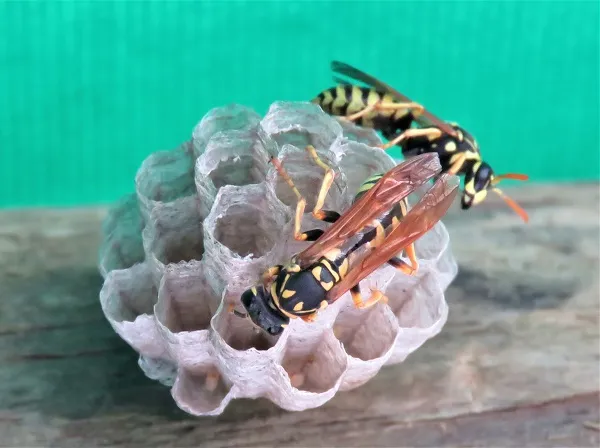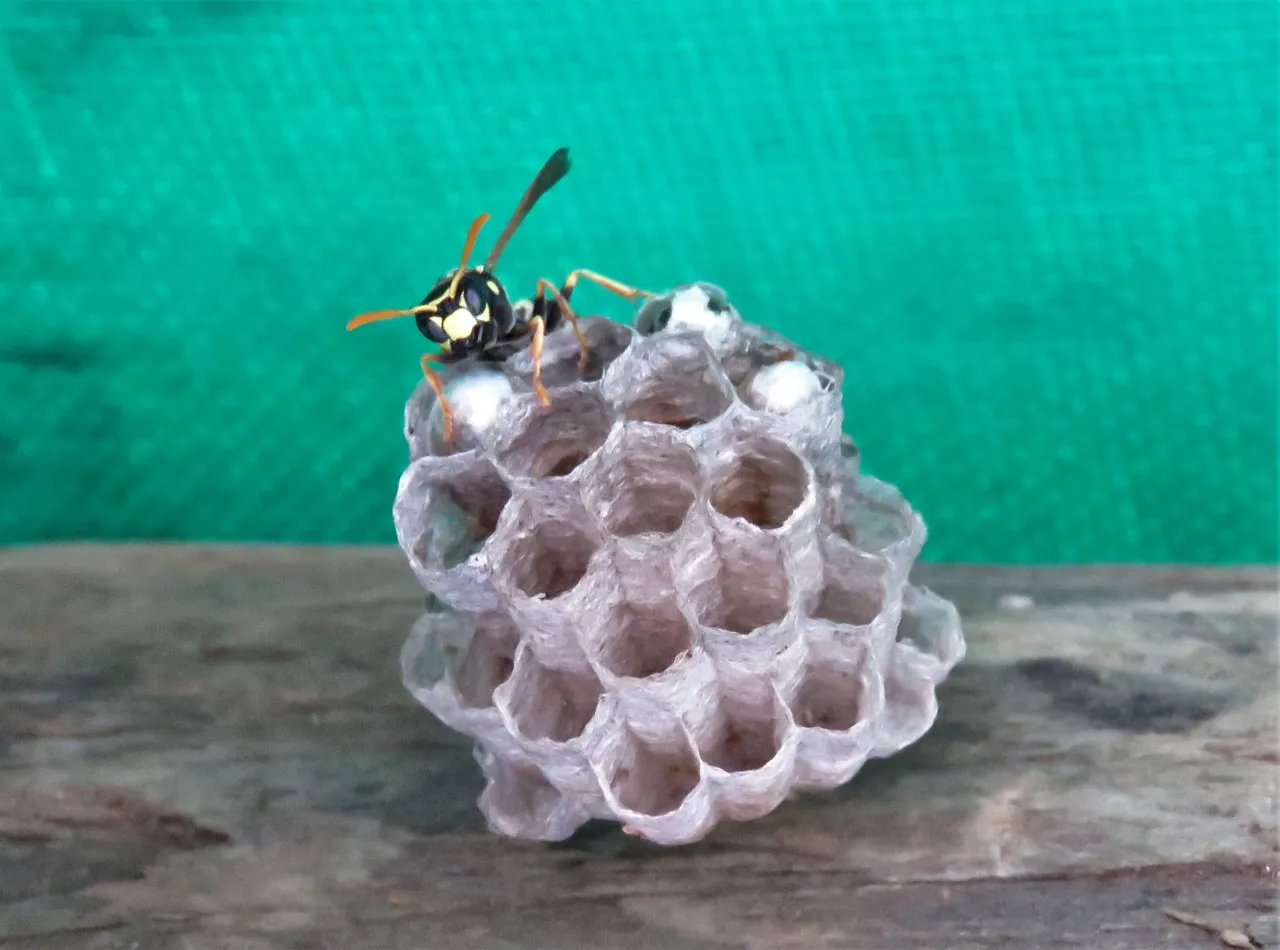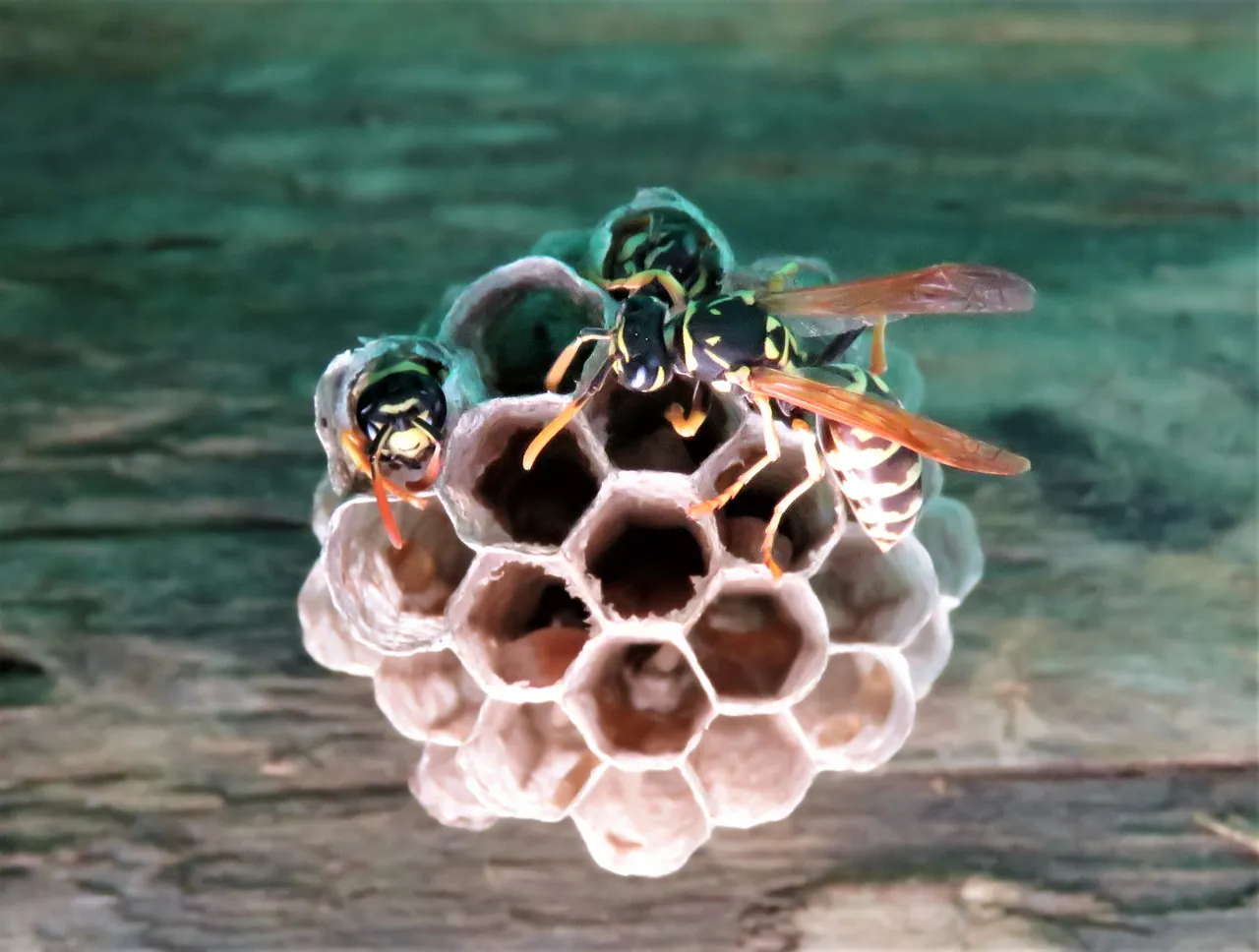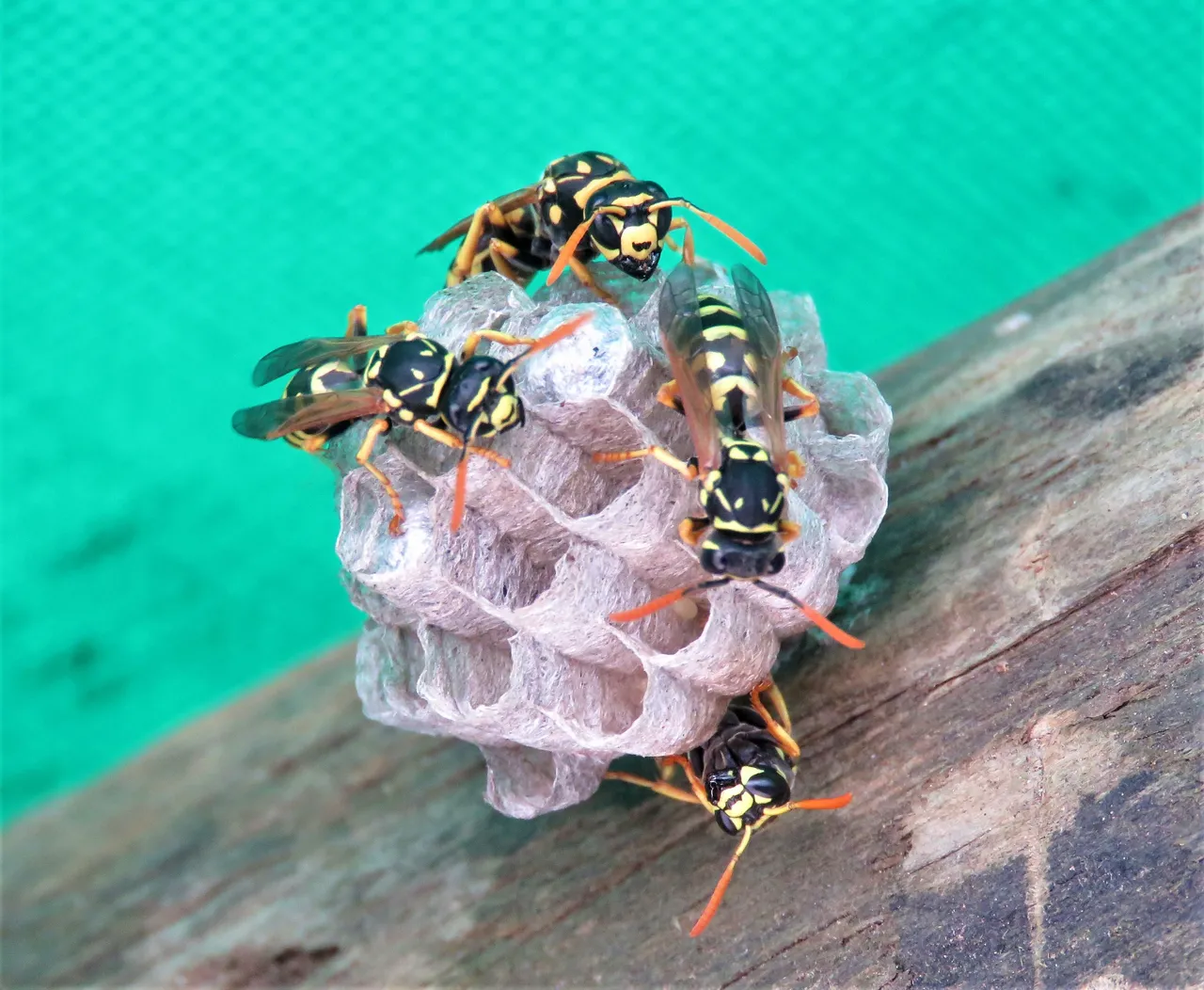Photos and 2 short videos of a wasp nest in action up close.

They are known as Yellow Jacket wasps (Vespula vulgaris) of European origin and somehow they invaded South Africa in the early 70s.
Now so many years later they have earned the pest label and the pest experts have a hard time controlling their numbers.
Now I am not a wasp specialist, but I do know that due to the vast expanses and variable nature of the country it will be an impossible task to eradicate the wasps.
They decided to come and start a family under my new carport roof.
This video will show you that they had completed the nest and the female laid her eggs. Note that there was only 1 egg in each compartment.
Then it was time for the babies to emerge and here was a newborn above 3 developing eggs that will soon pop open.



Of course the mom often flew in to come and check on the progress as you will see in this video.

And here was when I saw that there were clumps of eggs in some compartments.
The father continued to irritate me by whooshing around my head, but he had no luck, as I simply ignored him :)
Not really as I kept a close eye on him and when things started to take on a serious tinge, I simply climbed down and stepped away for a while.
Instead, I should have rather have kept an eye on the mother, as they are the stingers. But she was occupied with her babies.

Of course I returned and was amazed at the speed that the babies grow.

Now just imagine how these can breed and I found this,
Vespula vulgaris is a eusocial vespid that builds its tan paper nest in or on a structure capable of supporting it. A founding queen searches for a hollow tree, wall cavity, rock crevice, or even a mammal-made hole to build a nest. One colony cycle lasts for about 6–11 months and each colony cycle produces around 3000–8000 larvae.
Source
I think that they like the African sun and that they are here to stay.
So be it and we just have to learn to live with them like they did in Australia and other countries in the Southern Hemisphere.
We hope that you enjoyed the post and if you also have the yellow jacket wasps in your country, please tell me about it.
And That's All Friends.
Photos by Zac Smith-All Rights Reserved.
Camera: Canon Powershot SX60HS Bridge camera.
Thank you kindly for supporting a post on behalf of @papilloncharity

